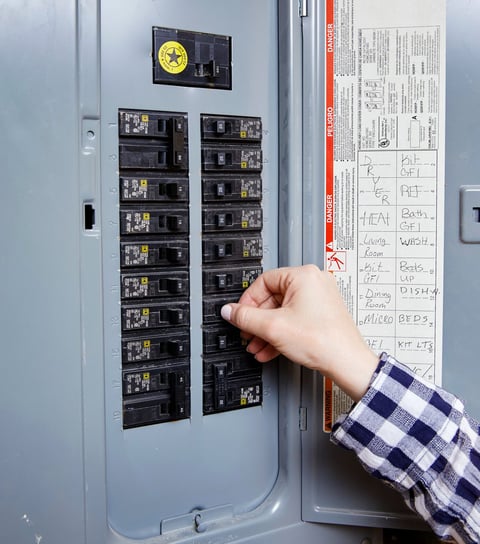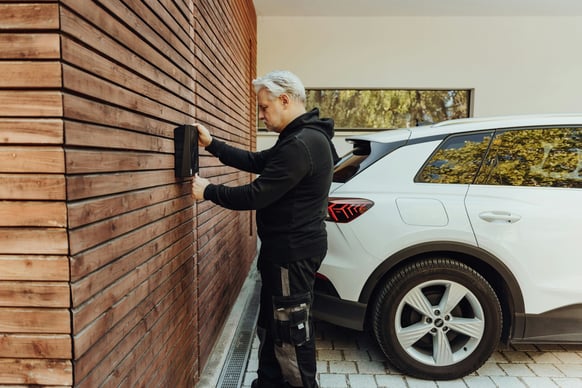
5 Major Costs of an EV Charging Project
EV Charging projects are expensive but where does all the money go?
BUSINESSESSTRATAS
Where does all the money go on an EV charging project?
Introduction
You might be surprised to learn that EV chargers are actually the least expensive part of an EV charging project. There are a variety of components to the project that cost much more. Below, I'll break down the different components of a Level 2 EV charging project and where the money is allocated.
1. The Chargers
As I mentioned above, the chargers are actually the least expensive part of an EV Charging project. For our purposes we’ll be focusing on Level 2 EV chargers. Level 2 chargers are the most common chargers you’ll find in public and residential buildings and usually cost a fee to use.
Cost of EV Chargers
Level 2 Chargers can be purchased on Amazon for as cheap as $500 or purchased high quality from Switzerland for closer to $3500. It recommend on investing at least $1000 and make sure they are smart chargers with networking capabilities and can be connected to the internet. You’ll also want to ensure the EV chargers are OCPP compliant which most are these days. I go into the importance of OCPP in another article here (link coming soon).
Cheap EV Chargers
A cheap charger is fine if you’re just using it at home for personal use but if you’re deploying a handful of chargers for public use you don’t want to cheap out. The reliability of EV chargers is a big concern right now so being aligned with higher quality dependable chargers will ensure your customers have a good experience.
2. Installation
The installation will comprise the majority of the project cost. Installation includes several components, which I'll discuss in more detail below.
Conduit & Copper Wiring
Conduit is the metal tube that covers the wires. The metal conduit itself isn't very expensive, but the labor cost of installing it is. Often, the conduit will need to run along the ceiling, so if the ceiling is very high, it will often require a lift for installation. A lift is a type of elevator contraption that lifts the electrician up close to the ceiling for an easier installation.
Far Away Electrical Room
Inside the conduit are the copper wires, and copper is expensive. You always want the electrical room to be as close to the EV Chargers as possible. This is because the further away the electrical room is, the longer the conduit run will be, and the more you'll have to pay for copper and labor for installation. The idea is to have the EV Chargers as close to the electrical room as possible. This will reduce costs and complications during installation.
Room on the Panel
The EV Chargers will require their own dedicated circuits on an electrical panel. This is one of the first things electricians will look for. If you don't have any spare switches on your electrical panel, then you may need to pay for a "subpanel" to be installed next to your existing panel strictly for your new EV chargers. This is uncommon as there is usually room on the panel for at least a few EV chargers.
Building Permit
Depending on the type of location and the scope of work required for the installation, you may need to obtain a building permit for your project. Keep in mind, the electrician will handle all of this for you and include the fee in the cost of the project. It's unlikely to cost more than $500, but it will extend the project timeline because acquiring building permits is time-consuming.
3. Electrical Service Upgrade
The first questions is how much power do you have in your building?
If this is a commercial building then you should be fine. People are worried that there is not enough power available to support EV chargers but this mostly applies to residential homes. You’ll most likely have a 208 volt 3-phase service in your location but you’ll need an electrician to stop by to confirm. If your electrical service needs to be upgraded then this would be the most expensive cost of your project.
Number of EV Chargers
All that to be said, it depends on how many chargers you plan to install. If you’re aiming for one or two then you should be fine but if you want close to 10 then a service upgrade may be required.
4. Start Up
These are the last few steps of the installation process.
Mounting and Commissioning
The next step of the project is to have the EV chargers mounted and commissioned. This will get them up and running. This includes mounting the chargers to the wall, hardwiring them, and making sure they’re working properly. This should only take a few hours and will be built into the cost of the project.
Networking
Next comes the networking. Level 2 EV Chargers need to be connected to the internet or “networked” so they can be monitored remotely, process payments and many other reasons. Keep in mind there may be a monthly fee associated with having a wi-fi/cell connection for the chargers. You will also most likely get billed by the software company for using their app. This is called a “networking fee” and usually costs between $25-$75 per charger.
5. Aesthetics
This part is optional but here are a couple optional ways to make the experience more enjoyable at your EV chargers. Going the extra mile of having an aesthetically pleasing location will add to the positive experience of the users and encourage them to return and promote your chargers to other EV Drivers.
Paint Job
To make your EV charging location stand out, you may want to consider having the parking stalls painted. A green paint job on the stalls with an EV logo will help people determine they're in the right spot. People will notice the stalls in one glance. I should note, the quotes I’ve seen for stall painting have been more expensive than I expected so you may want to shop around to compare a few quotes.
Signage
If you plan to make a profit from the chargers you’ll want them to be easy to find. You’ll always have the technical maps such as plugshare listing your locations but having visuals at the location makes a big difference. Big signs near to the chargers will help point people in the right direction.
Conclusion
If you’re considering starting an EV charging business or planning to install a few chargers at your location for customers these are the major costs that will be associated with the project. As mentioned, the installation will account for the vast majority of the project cost. Having an electrician stop by to provide a quote will answer most of your budgeting questions and they usually agree to offer pricing for free. I’d highly recommend exploring this option as it may turn out to be a very lucrative investment for yourself or your business.
Give me a shout if I can help answer any questions.
Sayonara,
Strong Energy






